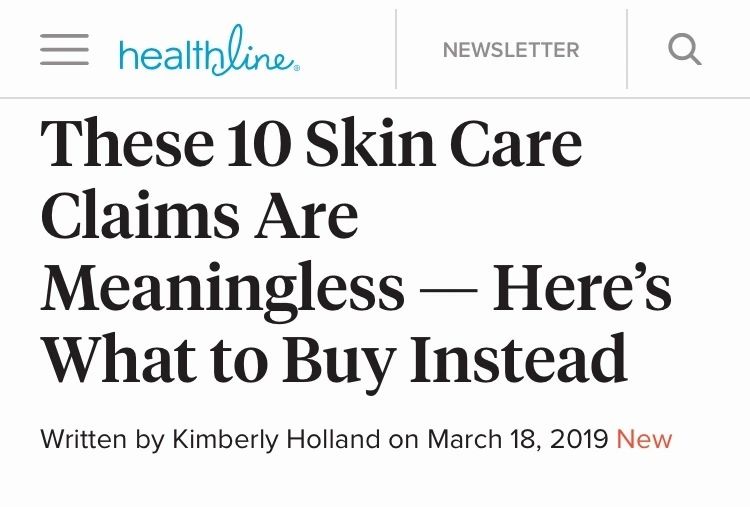A great Article from healthline.com The moral of the story is to learn how to read and understand the ingredients listing on the back of the packaging and not just the clever marketing messages on the front.
Here is a snippet from the article written by Kimberly Holland, Click the Link at the bottom to read it in full . 👇🏼

What do these phrases mean?
Botanical
This claim may mean one or more of the ingredients is derived from a plant,
It could also mean something in the product is synthetic but acts similar to a plant-based ingredient. It’s a feel-good claim, especially as people are seeking out more “natural” products over synthetic.
“‘Natural’ ingredients may imply where the ingredients come from but discloses nothing about the safety of the ingredient,” Frey said. “While most consumers can apply personal care products that claim to be ‘all natural’ without any ill effects, some plant-derived ingredients can cause severe reactions in those with allergies.”
Patented technology
“That’s a way to show that perhaps their product is unique compared to their competitors,” said Dr. Susan Bard, a board-certified general and procedural dermatologist in Brooklyn, New York.
“Unique, however, doesn’t necessarily mean better or even effective.”
Instant results
Any product can provide a temporary boost of moisture or have a quick “firming” effect, but those results may fade shortly, Shah says.
You want products with long-term results, which isn’t as sexy a claim as “instant.”
Firming
You pick up a bottle of firming facial night cream because you want your skin to look tauter, but that claim means essentially nothing,
“There is no objective way to measure firming. When a brand says their product has been shown to firm your skin, that claim can only be based on very subjective consumer perception,” he said.
Maximum strength
“Maximum strength refers to products that provide a higher concentration of the active ingredient than the regular strengths,” said Dr. Erum Ilyas, a board-certified dermatologist in Pennsylvania. “However, this is not necessarily referring to buying the highest strength available.”
Ilyas says this claim can be misleading for people looking to get more effectiveness from high strengths.
“After trying a ‘maximum strength’ without a response, there can be an assumption that even that didn’t work,” she said.
Clinical strength
A step up from “maximum strength” might be “clinical strength.”
But “this is still likely going to fall short of prescription strength,” Ilyas said.
Medical packaging
Package designers may try to trick you into thinking their product is more legitimate by using clever design elements like test tubes or even a first-aid cross.
This can suggest to you that this product has a prescription-strength formula, even though it’s sold over the counter.
Anti-aging or age-defying
“‘Anti-aging’ in my opinion is the most brilliant marketing term on skin care product labels,” Frey said.
Over-the-counter anti-aging, age-defying, or revitalizing products may increase hydration and temporarily reduce the appearance of very fine lines, “but pronounced wrinkles and skin folds cannot be corrected by moisturizer application,” Frey noted.
What to look for in skin care products.
Deciphering claims and promises will help set expectations for what your skin care products can do. Then, you can learn to understand what the product is actually telling you.
“I educate my patients to look at ingredient labels more so than the front of the package,” Ilyas said. “Look for products to contain certain ingredients that we know based on medical studies are effective. Look for percentages as well.”
Your dermatologist can direct you to products and ingredients that will help address your skin concerns.
“There’s a big difference between a product that has salicylic acid versus one that says it has 2 percent salicylic acid. It could be just a splash or sprinkle of an ingredient you use but not enough to have a clinical effect.”
You can — and should — look for results, too.
Some brands will offer “clinical studies” that show significant results in just a few weeks. Those don’t mean much, Shah says.
“The best thing that companies can do when marketing their consumer-targeted skin care products is to show visually accurate ‘before and after’ photos of patients who’ve used the products consistently for more than six months, especially if claiming improvements in collagen content or complexion correction,” Shah said.
“A picture is worth a thousand words, and consumers can feel comfortable knowing that a product actually works by seeing actual results.”

